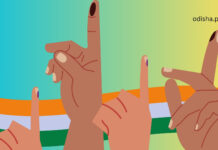Bhaskar Parichha
This is a motivating book and a curious one too. Talking about several women of substance, it goes to jog your memory about their contributions to the respective arenas.
Her Stories–Indian Women Down the Ages- Thinkers, Workers, Rebels, Queens by Deepti Priya Mehrotra is a bold account of the women who have been overlooked and ignored. A political scientist with cross-disciplinary interests, Mehrotra counsels civil society organizations on gender and education issues. Having taught social science at Delhi University and TISS, she is the author of pioneering books that include Home Truths: Stories of Single Mothers, Burning Bright: Irom Sharmila and the Struggle for Peace in Manipur, A Passion for Freedom: The Story of Kisanin Jaggi Devi, Gulab Bai: The Queen of Nautanki Theatre and Bharatiya Mahila Andolan: Kal, Aaj aur Kal.
Says the book’s blurb: ‘Some were celebrated, Others vilified While some were casually neglected Yet, the story of these women lived on Her-Stories is a discussion of women from Indian history whose contributions have been all but forgotten. These were poets, performers, warriors, saints, philosophers, activists and more, yet we hardly remember their courage and contributions. The time has come to bring their history to the fore.’
‘Their stories describe desperate situations, ingenious strategies and brilliant sparks of feminist consciousness. Rather than accounts of isolated ‘great women’, these stories place at the center the ordinary woman, in all her splendid diversity, multifaceted struggle and achievement. The women profiled were encouraged and supported by others—their achievements represent the aspirations of many in the past, and provide inspiration for us in the present.’
Cutting across several regions of India and presented in chronological order from second millennium BCE, to the mid-nineteenth century India, these are the stories of women who have been thinkers, doers, movers and shakers who have subverted hierarchies, brought peace out of chaos and survived despite routine devaluation. Philosopher Sulabha, philanthropist Vishakha, fearless Uppalavanna, wandering bard Auvaiyar, justice maker Leima Laisna, astronomer Khona, mountain queen Didda, radical poet Akkamaha devi, intrepid Sultan Razia, martial artiste Unniyarcha, poet-saint Janabai, Gond Rani Durgavati, historian Gulbadan, cultural ambassador Harkha, pepper queen Abbakka, Fakira Jahanara, brave Onake Obavva, Dalit rebel Nangeli, dancer-diplomat Mahlaqa Bai Chanda, lion queen Jindan, Nawab Begum Qudsia, sharpshooter Uda, Guerrillera Hazrat Begum and feminist writer Tarabai Shinde.
Writes Mehrotra in the introduction: ‘Where mainstream histories display yawning gaps, feminist scholarship, and Dalit, subaltern and gender studies have gradually unearthed rich data, and made analytical advances. Some gaps persist, for historical sources are inevitably limited. One needs to sift through document, legend, myth and hagiography, to arrive at the most plausible truth. While remaining true to evidence, through empathy and imagination facts grow wings and characters come alive.’
The book is incontestably a saga of valiant women achievers, dissenters, fighters and advocates who changed the wave of complacent human existence. Igniting the spark of feminist consciousness, it celebrates the stories of women with forgotten glory.
In ‘Didda: Mountain Queen’, she marks: ‘Didda ruled in Kashmir for 50 years: nearly half of it is absolute sovereign. She earned the rare distinction of bringing stability into the fractious kingdom. Didda’s father-in-law, Parva Gupta, was a clerk until, in 949, he killed King Sangram deva and grabbed the throne, only to die within a year. His son Kshema Gupta took over, and proved as incapable as his young wife, Didda, was capable. Kshema Gupta married Didda immediately after assuming power, slyly calculating that her royal lineage would provide legitimacy to his rule. Didda’s father was Simharaja, king of Lohara, and her maternal grandfather was Bhima Shah, powerful ruler of Kabul and Gandhara. Didda was in her mid-20s when she married, later than the usual age of marriage—quite likely because she suffered from a disability.’
Reasons Mehrotra about the book: ‘Critical feminist subaltern historiography asks new questions and makes fresh interpretations. The move away from androcentric elite history breaks down walls, releasing a surging ocean of human beings who have much to tell. Women characters emerge from nooks and crannies; each different, in varied circumstances, yet each laboring against the grain of patriarchy, in some or the other aspect of her life. For centuries, patriarchy has defined and limited, reserved the public sphere for men and assigned subsidiary roles in the private domain to women.’
‘Mainstream male-stream-history has colluded with these constructions, naturalizing women as stereotypical daughters, wives, mothers symbols of domesticity, rather than active human being Dalit and working-class women have been, additionally, naturalized as workers whose labor belongs to the elite.’
In about three hundred pages, Mehrotra writes about the injuries without making it an insipid narrative. She captures the drama concealed beneath the surface. If the women she dwells on in the book were not just victims, but makers of history and of literature, philosophy, law, medicine, science, art, architecture, music and religion, Her Stories goes that extra mile to bring out the tale of survival in a system rooted in domination and defeat.
Indian Women Down the Ages
Deepti Priya Mehrotra
Rupa Publications India,
New Delhi, 2022
(The author Bhaskar Parichha is a Bhubaneswar based senior journalist and columnist. Views are personal)
Tags: #Criticalfeminist #MountainQueen #IndianWomenDowntheAges #RupaPublications #DalitHistory #DeeptiPriyaMehrotra #Feminism #WomenStories




















